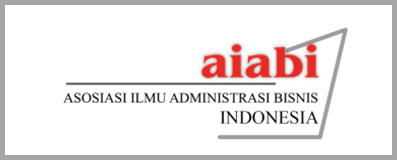PENGARUH COST OF BORROWING, PROFITABILITY DAN COLLATERAL VALUE OF ASSETS TERHADAP STRUKTUR MODAL PADA PERUSAHAAN REAL ESTATE DI INDONESIA
DOI:
https://doi.org/10.31334/bijak.v13i1.48Keywords:
Cost of borrowing, Profitability and collateral value of assetsAbstract
Genarlli, the main goal of a company is to maximize its shareholders’ wealth. For a public company, it means maximizing return to its outstanding shares. The final decisions made by the management, which comprise of investment decision and financing decision. Real estate industry is a capital-intensive industry that would spend large fund to start the operations. Consequently, most real estate companies would search and rely upon loan from third parties as its main financing source other than its own capital.
The objective of this research is to reveal whether there is influence of cost of borrowing, profitability, and collateral value of assets on capital structure.
Th hypothesis for this research are: (a) to reveal whether there is influence of cost of borrowing on capital structure in real estate companies in Indonesia, (b) to reveal whether there is influence of profitability on capital structure in real estate companies in Indonesia, (c) to reveal whether there is influence of collateral value of assets on capital structure in real estate companies in Indonesia, and (d) to reveal whether there is influence of cost of borrowing, profitability and collateral value of assets, simultaneously, on capital structure in real estate companies in Indonesia.
Using multiple linear regressions to test those hypotheses, the data obtained from real estate companies listed in Indonesia Stock Exchange during 2003-2007 revealed that: (a) there is negative and significant influence of cost of borrowing on capital structure in real estate companies in Indonesia, (b) there is positive and significant influence of profitability on capital structure in real estate companies in Indonesia, (c) there is positive and significant influence of collateral value of assets on capital structure in real estate companies in Indonesia, and (d) there is significant influence of cost of borrowing, profitability and collateral value of assets, simultaneously, on capital structure in real estate companies in Indonesia.
The result of this research indicated that cost of borrowing is the factor that significantly determines the capital structure. Obtaining loan from third parties would result higher interest expenses, and in turn result in low net income, compared to companies that use their own source of financing. Of course, the decision to finance a company through loan facilities should be based on in-depth analysis and calculation especially in relation to the company’s capability for settlement.
References
Amir, Mohammad Faisal, 2006, “Mengolah dan Membuat Interpretasi Hasil Olahan SPSS untuk Penelitian Ilmiahâ€, Jakarta : EDSA Mahkota.
Arifin, Zaenal, 2006, “Teori Keuangan dan Pasar Modalâ€, Yogyakarta, Ekonesia.
Bhole, L.M. dan Mahakud Jitendra (2004), “Trends and Determinant of Corporate Structure in India: A Panel Data Analysisâ€.Journal of Finance, Vol. XVIII No. 1, March.
Booth, L., V. Aivazian, A. Dermigue-Kunt, and Maksimovic, (2000), “Capital Structure in Developing Countriesâ€, Journal of Finance.
Brealey, Richard A., Stewart C. Myers, (2003), “Principles of Corporate Financeâ€, 7th edition, New York : McGraw-Hill Companies Inc.
Chen, Kaifeng, (2002), “The Influence of Capital Structure on Company Value with Different Growth Opportunitiesâ€, FAME and University of Lausanne.
Damodaran, Aswath, (2001), “Corporate Finance, Theory and Practiceâ€, 2nd edition, New Jersey : John Wiley & Sons, Inc.
Ghozali, Imam, (2005), “Aplikasi Analisis Multivariate dengan Program SPSSâ€, edisi 3, Semarang, Badan Penerbit – Undip.
Gujarati, Damodar N., (2003) “Basic Econometricsâ€, 4th edition, New York: McGraw-Hill/Irwin.
Haspeslag, P.C., and Jernison, D.B. (1991). “Managing acquisitions: Creating value through corporate renewaâ€, New York: The Free Press.
Keown, Arthur J., John D. Martin, J. William Petty dan David F. Scott, Jr., “Financial Management:Principles and Applicationsâ€, 10th edition, New Jersey : Pearson Prentice Hall, 2005.
Riyanto, Bambang, (2001), “Dasar-dasar Pembelanjaan Perusahaanâ€, Edisi 4, Yogyakarta, BPFE.
Sartono, Agus, (2001), “Manajemen Keuangan: Teori dan Aplikasiâ€, Edisi 4, Yogyakarta, BPFE.
Sudarmanto, R. Gunawan, (2005), “Analisis Regresi Linear Ganda dengan SPSSâ€, Yogyakarta: Penerbit Graha Ilmu.
Supranto, J., (1990), “Statistik – Teori dan Aplikasi Jilid 1 dan 2â€, Edisi Kelima, Jakarta: Penerbit Erlangga.
Van Horne, James C., (1998), “Financial Management and Policyâ€, 11th edition, New Jersey : Prentice-Hall Inc.
Wahyono, Teguh, (2006), “Analisis Data Statistik dengan SPSS 14â€, Jakarta : PT Elex Media Komputindo.
Downloads
Published
Issue
Section
License

This work is licensed under a Creative Commons Attribution-ShareAlike 4.0 International License
Please find the rights and licenses in Majalah Ilmiah Bijak By submitting the article/manuscript of the article, the author(s) agree with this policy. No specific document sign-off is required.
- License
The commercial use of the article will be governed by the Creative Commons Attribution license as currently displayed on Creative Commons Attribution-ShareAlike 4.0 International License.
2. Author(s)' Warranties
The author warrants that the article is original, written by stated author(s), has not been published before, contains no unlawful statements, does not infringe the rights of others, is subject to copyright that is vested exclusively in the author and free of any third party rights, and that any necessary written permissions to quote from other sources have been obtained by the author(s).
3. User Rights
Majalah Ilmiah Bijak spirit is to disseminate articles published are as free as possible. Under the Creative Commons license, Majalah Ilmiah Bijak permits users to copy, distribute, display, and perform the work for non-commercial purposes only. Users will also need to attribute authors and Majalah Ilmiah Bijak on distributing works in the journal and other media of publications.
4. Co-Authorship
If the article was jointly prepared by more than one author, any authors submitting the manuscript warrants that he/she has been authorized by all co-authors to be agreed on this copyright and license notice (agreement) on their behalf, and agrees to inform his/her co-authors of the terms of this policy. Jurnal Bijak will not be held liable for anything that may arise due to the author(s) internal dispute. Majalah Ilmiah Bijak will only communicate with the corresponding author.
5. Miscellaneous
Majalah Ilmiah Bijak will publish the article (or have it published) in the journal if the article’s editorial process is successfully completed. Jurnal Bijak editors may modify the article to a style of punctuation, spelling, capitalization, referencing and usage that deems appropriate. The author acknowledges that the article may be published so that it will be publicly accessible and such access will be free of charge for the readers as mentioned in point 3.
Every accepted manuscript should be accompanied by "Copyright Transfer Agreement"prior to the article publication.





1.png)




